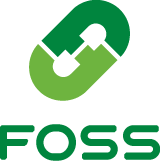U.S. Environmental Protection Agency Head in Seattle to Award “Emerging Technologies” Grant
Foss Maritime, ESW Canada, regional clean air agency to get federal stimulus dollars for cleaner marine engines
SEATTLE, December 3, 2009 – The U.S. Environmental Protection Agency’s highest official is in Seattle today to announce an investment in marine technology that promises to lower air pollutants’ harmful risks even as it preserves local jobs.
Lisa Jackson, EPA administrator, will award a $739,500 American Recovery and Reinvestment Act grant to Foss Maritime Company, ESW Canada and the Puget Sound Clean Air Agency (PSCAA), which are partnering to test a pollution-reducing device on two Foss tugs, the Garth Foss and the Lindsey Foss. The Puget Sound Clean Air Agency will manage the project on behalf of EPA.
Jackson will announce the grant at a ceremony at Bell Harbor, Seattle Pier 66, Waterlink Gallery, beginning at 12:30 p.m. Following the announcement, Foss officials, along with their ESW Canada and PSCAA counterparts, will be on hand to conduct media tours of the Lindsey.
“Foss is actively looking for opportunities in which our fleet can be used to test promising environmental technologies, as a part of our commitment to proactive environmental problem solving” said Gary Faber, the company’s president and COO. “This project puts Foss on the cutting edge of innovation, which is where we want to be.”
ESW Canada invented the unique pollution-reducing device, the XtrmCat (TM) Diesel Oxidation Catalyst. It is on EPA’s emerging technologies list and is projected to reduce particulate matter (PM) by 25 percent, hydrocarbons (HC) by 25 percent and carbon monoxide by 70 percent.
The four 4,000-horsepower marine engines on the Garth and the Lindsey will be retrofitted with the innovative catalysts in combination with a closed crankcase ventilation (CCV) system. ESW Canada is currently seeking verification of its catalyst/crankcase ventilation system for high horsepower marine and locomotive uses. The six-year partnership with Foss and the Puget Sound Clean Air Agency will allow ESW Canada to determine if the system is durable enough for extended maritime use.
David J. Johnson, president and CEO of the Concord, Ontario-based ESW Canada, said, “This project can serve as a model for long-term diesel emissions reductions for the entire marine sector. Moreover, the technology is designed to meet the demanding environment of high horsepower marine engines with no impact on vessel performance. We are proud to be working with a group of partners dedicated to taking on the challenge of implementing emissions reductions in marine vessels ahead of legislated requirements.”
The grant builds on regional efforts of the maritime community to meet voluntary pollution-reduction standards. The Ports of Seattle, Tacoma and Port Metro Vancouver, British Columbia, in cooperation with state, federal and regional air authorities, have worked together to develop the Northwest Ports Clean Air Strategy.
Dennis McLerran, executive director of the Puget Sound Clean Air Agency, said that a series of project benchmarks and timelines will insure that the public sees a benefit from the federal stimulus grant.
“Providing emission controls for harbor craft is a key element of the Northwest Ports Clean Air Strategy,” McLerran said. “This project is a model for what we’re trying to accomplish – reducing harmful diesel emissions from tugs and other harbor craft. The result will be cleaner air for citizens of our region for years to come, as well as jobs in the near term. We are pleased to be partnering with Foss and ESW Canada on a strategy that offers a significant payoff for the public.”
In addition, EPA officials said the project will help the local maritime industry rebound from the nation’s current economic downturn. The shipyard work needed to retrofit the Garth and the Lindsey will be completed at Foss’ local facility and employ local shipyard workers.
